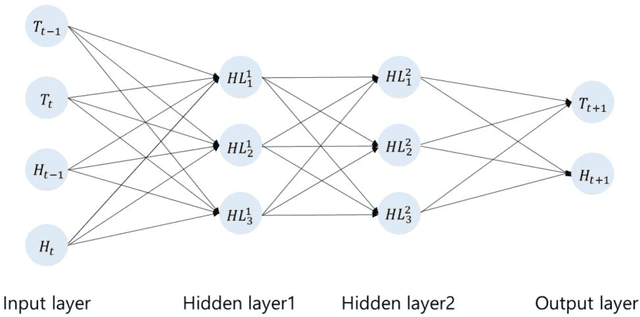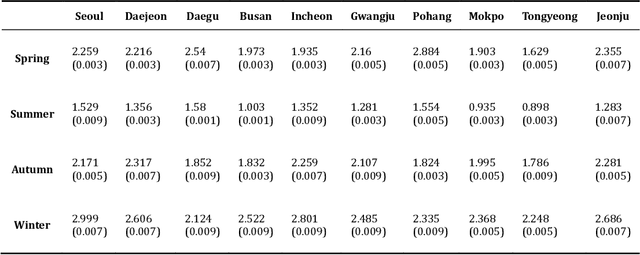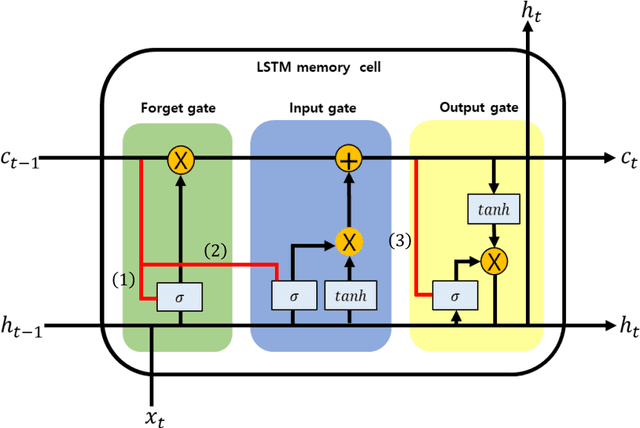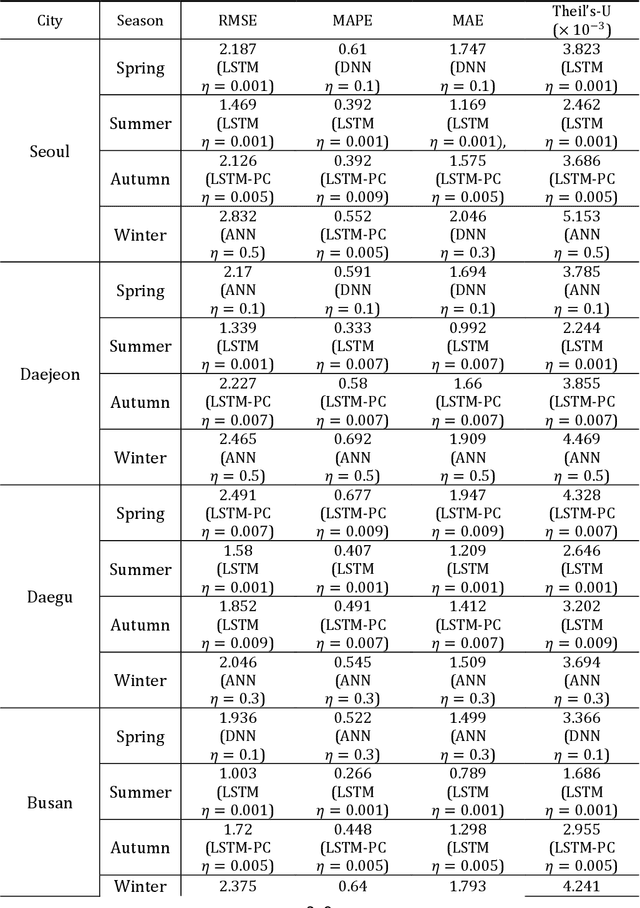Kyungsik Kim
Dynamical prediction of two meteorological factors using the deep neural network and the long short-term memory $(2)$
Apr 28, 2021



Abstract:This paper presents the predictive accuracy using two-variate meteorological factors, average temperature and average humidity, in neural network algorithms. We analyze result in five learning architectures such as the traditional artificial neural network, deep neural network, and extreme learning machine, long short-term memory, and long-short-term memory with peephole connections, after manipulating the computer-simulation. Our neural network modes are trained on the daily time-series dataset during seven years (from 2014 to 2020). From the trained results for 2500, 5000, and 7500 epochs, we obtain the predicted accuracies of the meteorological factors produced from outputs in ten metropolitan cities (Seoul, Daejeon, Daegu, Busan, Incheon, Gwangju, Pohang, Mokpo, Tongyeong, and Jeonju). The error statistics is found from the result of outputs, and we compare these values to each other after the manipulation of five neural networks. As using the long-short-term memory model in testing 1 (the average temperature predicted from the input layer with six input nodes), Tonyeong has the lowest root mean squared error (RMSE) value of 0.866 $(%)$ in summer from the computer-simulation in order to predict the temperature. To predict the humidity, the RMSE is shown the lowest value of 5.732 $(%)$, when using the long short-term memory model in summer in Mokpo in testing 2 (the average humidity predicted from the input layer with six input nodes). Particularly, the long short-term memory model is is found to be more accurate in forecasting daily levels than other neural network models in temperature and humidity forecastings. Our result may provide a computer-simuation basis for the necessity of exploring and develping a novel neural network evaluation method in the future.
Dynamical prediction of two meteorological factors using the deep neural network and the long short term memory $$
Jan 16, 2021



Abstract:It is important to calculate and analyze temperature and humidity prediction accuracies among quantitative meteorological forecasting. This study manipulates the extant neural network methods to foster the predictive accuracy. To achieve such tasks, we analyze and explore the predictive accuracy and performance in the neural networks using two combined meteorological factors (temperature and humidity). Simulated studies are performed by applying the artificial neural network (ANN), deep neural network (DNN), extreme learning machine (ELM), long short-term memory (LSTM), and long short-term memory with peephole connections (LSTM-PC) machine learning methods, and the accurate prediction value are compared to that obtained from each other methods. Data are extracted from low frequency time-series of ten metropolitan cities of South Korea from March 2014 to February 2020 to validate our observations. To test the robustness of methods, the error of LSTM is found to outperform that of the other four methods in predictive accuracy. Particularly, as testing results, the temperature prediction of LSTM in summer in Tongyeong has a root mean squared error (RMSE) value of 0.866 lower than that of other neural network methods, while the mean absolute percentage error (MAPE) value of LSTM for humidity prediction is 5.525 in summer in Mokpo, significantly better than other metropolitan cities.
 Add to Chrome
Add to Chrome Add to Firefox
Add to Firefox Add to Edge
Add to Edge